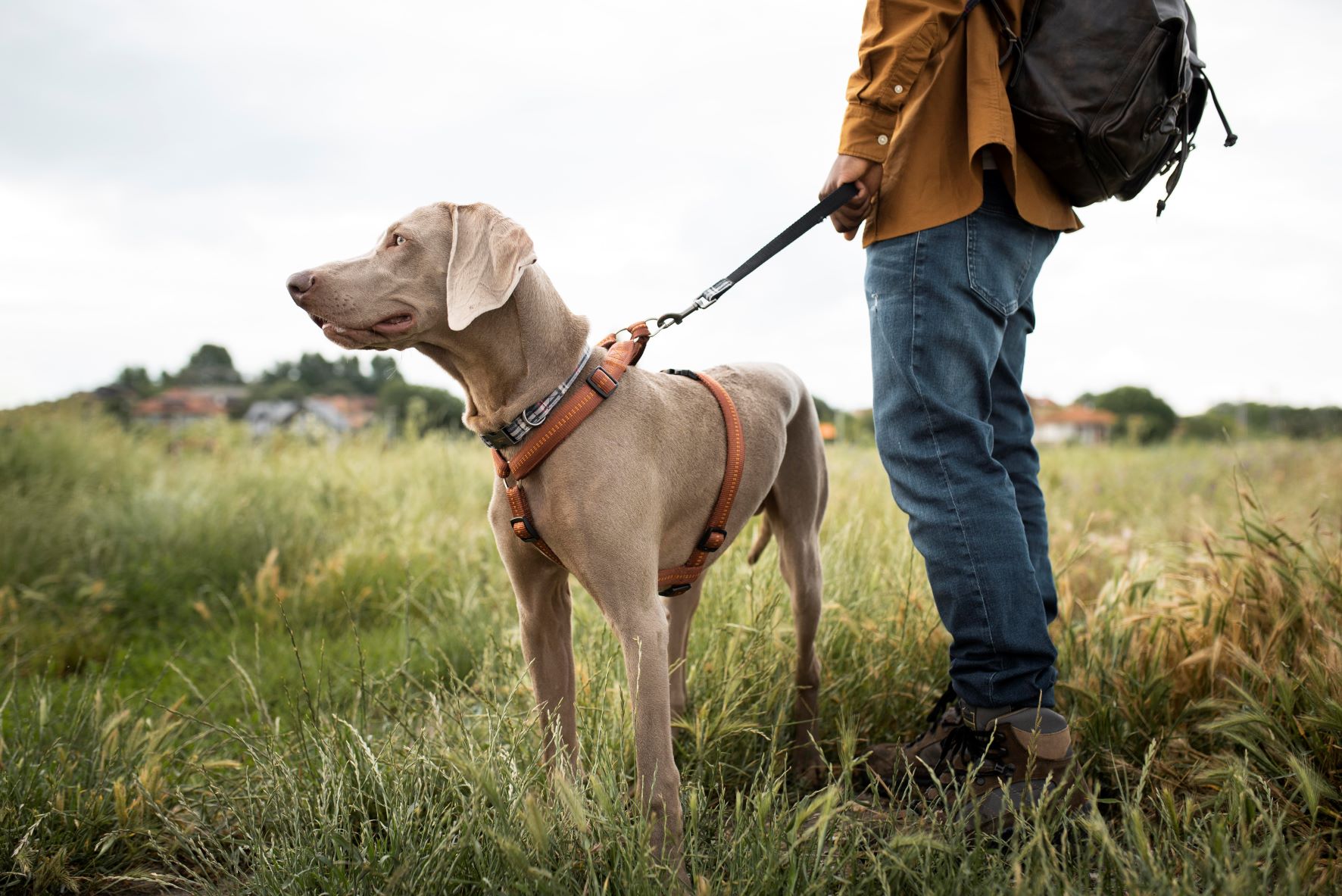
By Julia McPeek (CEO), Harmony Veterinary Center
With all of the new year resolutions being made this time of year, there’s no better time to start a new routine that benefits both you AND your dog! We often recommend walking as a key element of canine weight loss and fitness regimens, just as people doctors do for humans! It’s easier than you think if you simply carve out some time during each day.
For starters, forget the leash and collar if you want to burn some serious calories with your dog. Collars can compress the trachea (windpipe) when pulled, causing difficulty breathing or even a neck injury. Choke chains or any other collars that work by applying a constrictive pressure around the neck are especially dangerous. Your safest choice is a head halter (Gentle Leader®, etc.) or walking harness (Ultra Paws® Harness, Gentle Leader® Easy Walk, etc.). Look for wide, soft, padded straps and breathable materials.
A leash of a relatively short length is preferable. Retractable leashes are not recommended as they pose a danger to both you and your pup. You will be keeping your canine companion close to keep up a steady pace. Save the long leash for casual strolls around the neighborhood or explorations at the park.
For long Colorado winter walks, protective booties and dog coats may be required. If you will be walking in hot weather (above 80-85°F for most dogs), or if you will be walking longer than 30 minutes, do not forget to carry water for both you and your dog.
Set The Pace
Few dogs will naturally walk at a pace that generates the elevated heart rate needed for sustained aerobic activity and weight loss. Based on observations, the average pace of people walking with their dogs is 25 minutes per mile, which is actually a slow stroll. They make frequent pauses for the dog to smell an interesting object or mark territory.
Walking for weight loss is very different from walking for pleasure. Make your objective to walk briskly from the beginning of the walk. Too often, if you start slowly, allowing the dog to sniff and smell everything, you may have a challenging time getting them to speed up. It is not necessary to ‘warm up’ before a walk or a slow jog; as hunters, dogs have adapted to be able to accelerate rapidly with very little risk of injury.
Draw your leash close — generally within two-to-four feet of your body — and set off at a pace you feel comfortable sustaining. This should be about a 12-15 minute per mile pace, feeling like a brisk walk and making you break into a light sweat. The key is to keep it up!
Do not look down at your dog when they inevitably want to stop and smell something or mark a fire hydrant. Continue moving straight ahead, tighten the leash (but do not jerk it) and give a command such as “No stop,” “Come,” or “Here.” Head halters are a great method for training dogs to heel during a brisk walk. If your dog sits or refuses to walk, you may have to return home. If this happens, you should crate him or put him in a quiet space without your attention and try again another time. However, this is rare, since most dogs take readily to this new form of exercise.
Time It Right
For most overweight or obese dogs, providing they have normal heart and lung function and no other pre-existing medical conditions, we recommend starting with 30-minute walks at least five times a week. Here is a sample schedule that will benefit you both:
| Week 1 | 30 minutes per day | 10 minutes brisk followed by 20 minutes casual pace |
| Week 2 | 30 minutes per day | 15 minutes brisk followed by 15 minutes casual pace |
| Week 3 | 30 minutes per day | 20 minutes brisk followed by 10 minutes casual pace |
| Week 4 | 35-40 minutes per day | 30 minutes brisk followed by 5-10 minutes casual pace |
| Week 5+ | 35-60 minutes per day | Try to do two 20-30 minute walks per day: 15-25 minutes brisk followed by 5 minutes casual pace |
Remember, physical activity such as this should be thought of as fun with a purpose! When you combine exercise with proper diet and lifestyle, you contribute to your well being as well as your dog’s health, improving the quality of life for both of you.



0 Comments